Ortolan Bunting
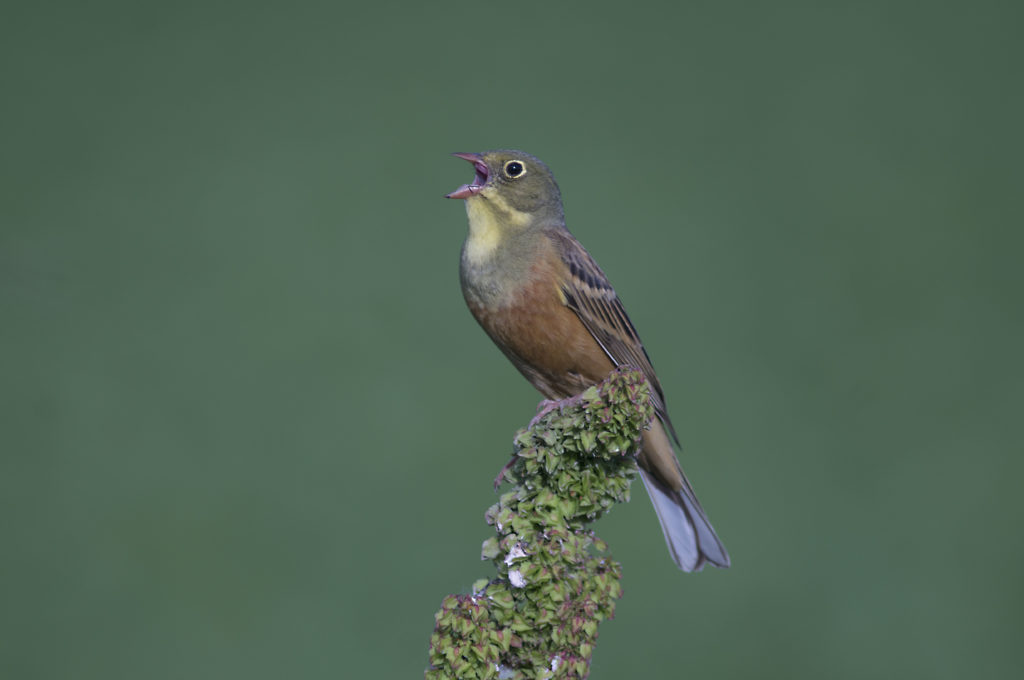
Ortolan bunting song.
Recorded using a mid MONO parabolic microphone – 2 x Primo EM172 caps and a 33 cm dish.
Filmed with a Sony Nex6 + adapter and a Lens Nikon 400 IF-ED 5,6.
Special thanks to Gastone Pivatelli.
Zoom F3 microphones stereo baffle
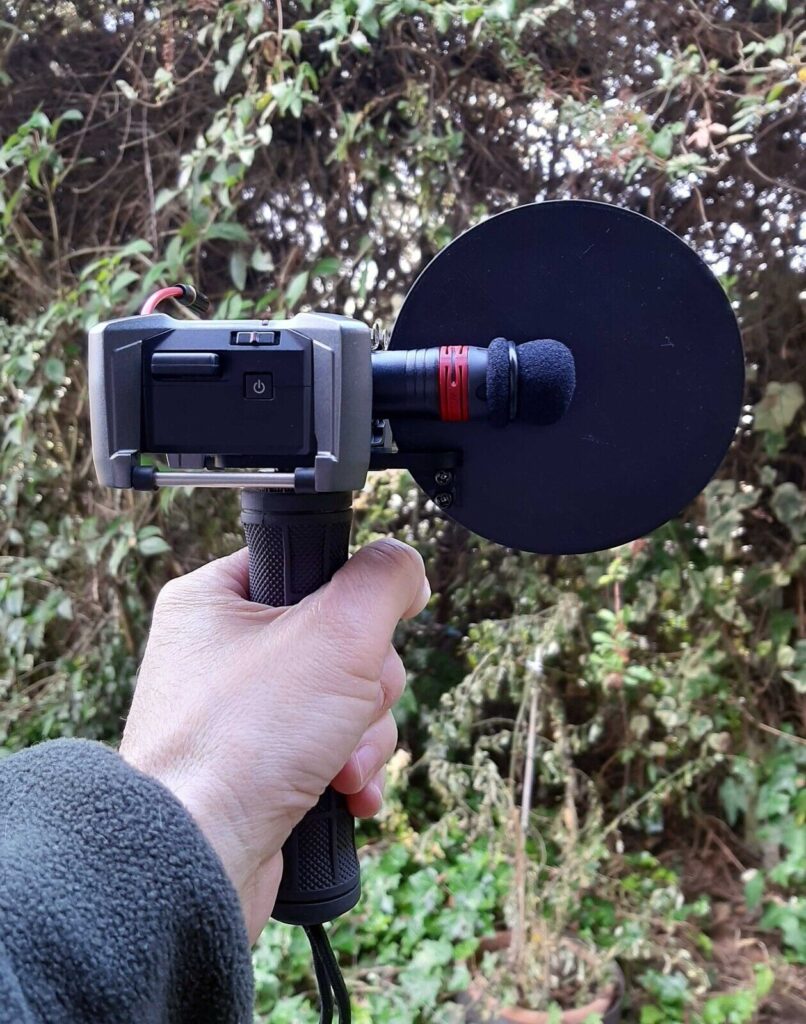
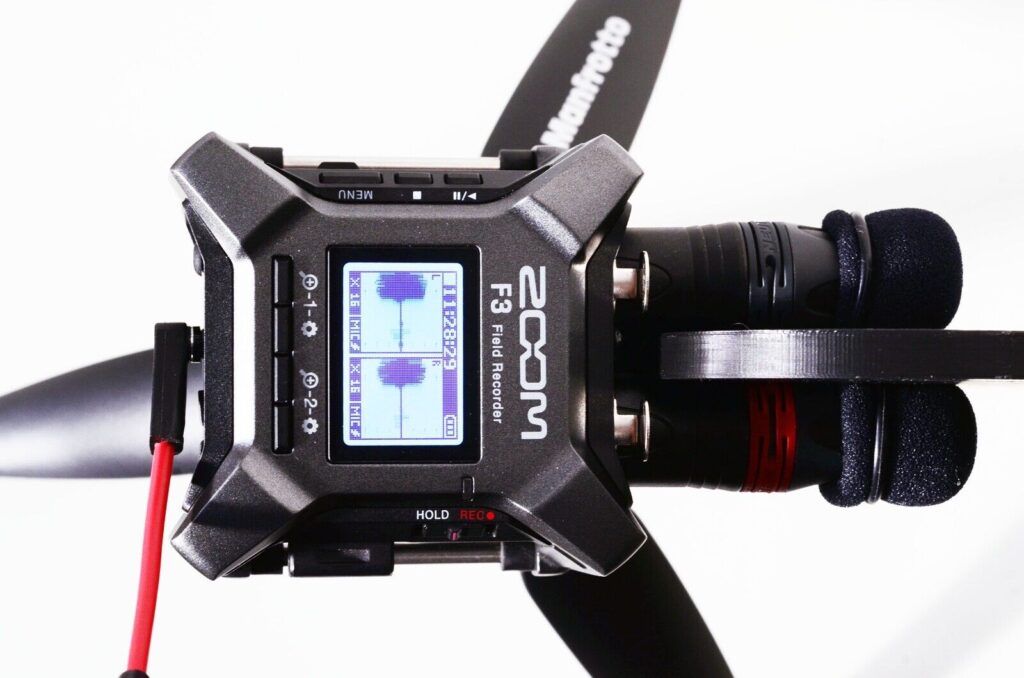
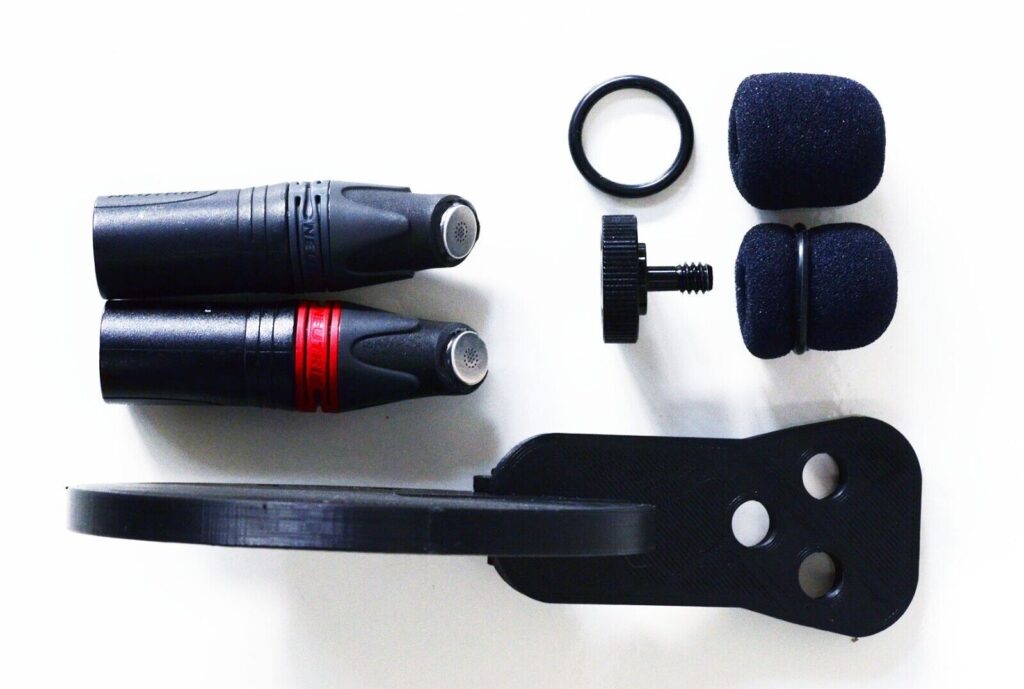
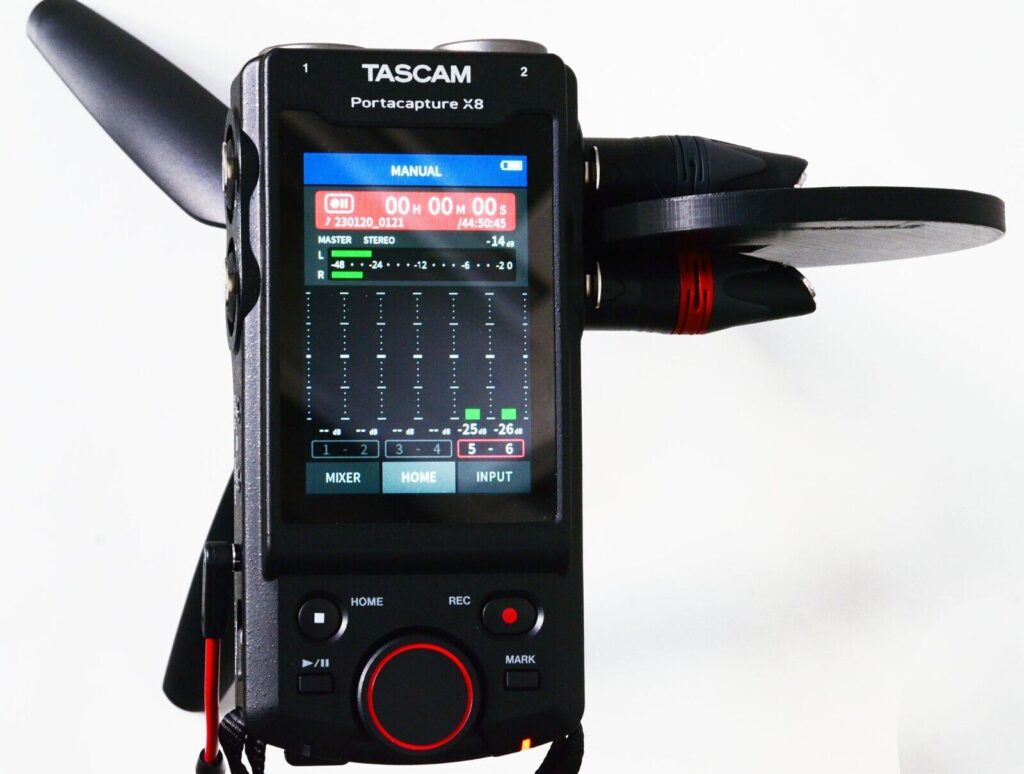
___________________________________________________
ZOOM H1e Essential stereo baffle
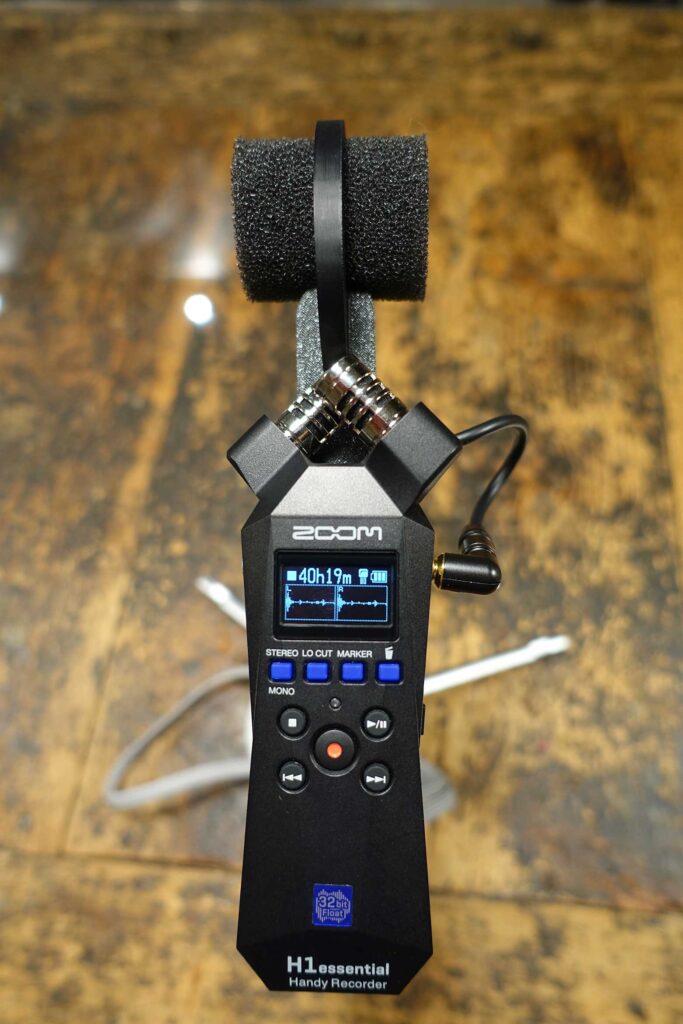
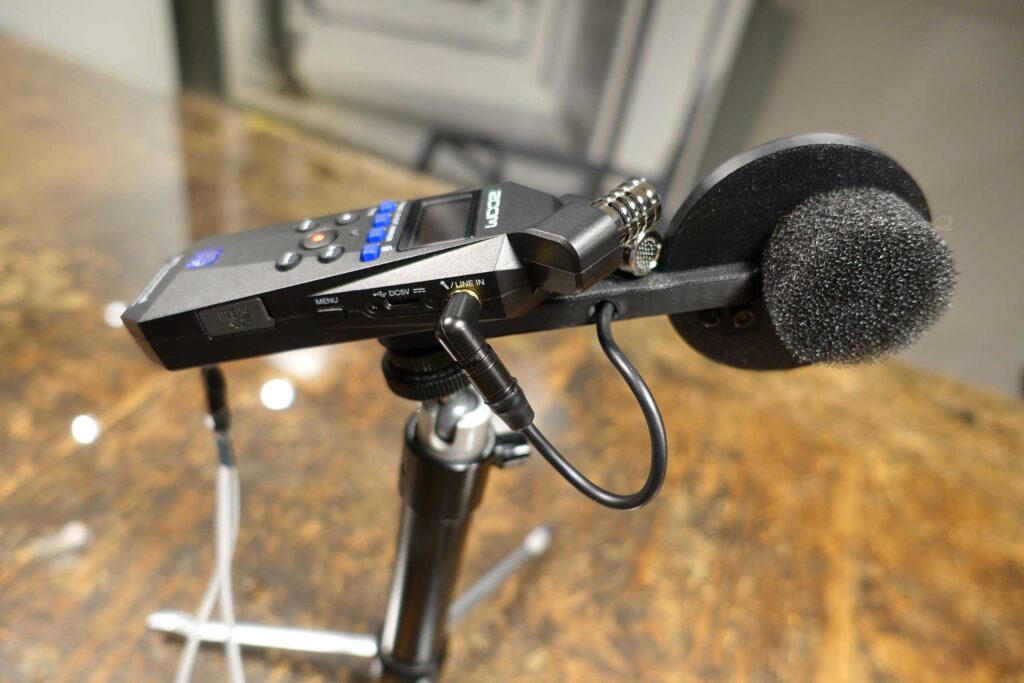
Sennheiser ME66 Ph. 48v Vs. 1.5v
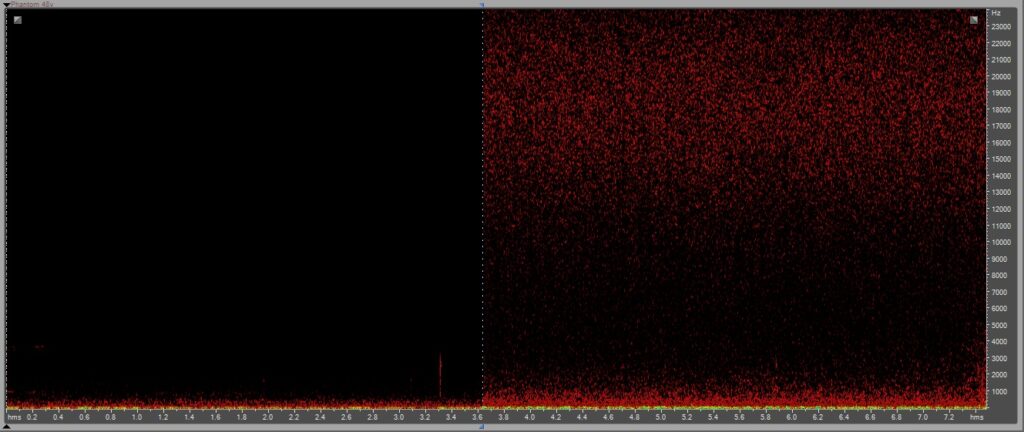
Left Phantom Power 48v – Right 1,5v AA battery at the same Rec Level.
Warm Audio 47jr Vs. Rode NT1a
Tonight I tried to do a field recording to see/hear the difference between the Warm Audio WA47jr and the Rode NT1a.
I recorded a nightingale singing.
The files were normalized to -0.1 dB
ZOOM F3 – WARM AUDIO WA47jr – RODE NT1a
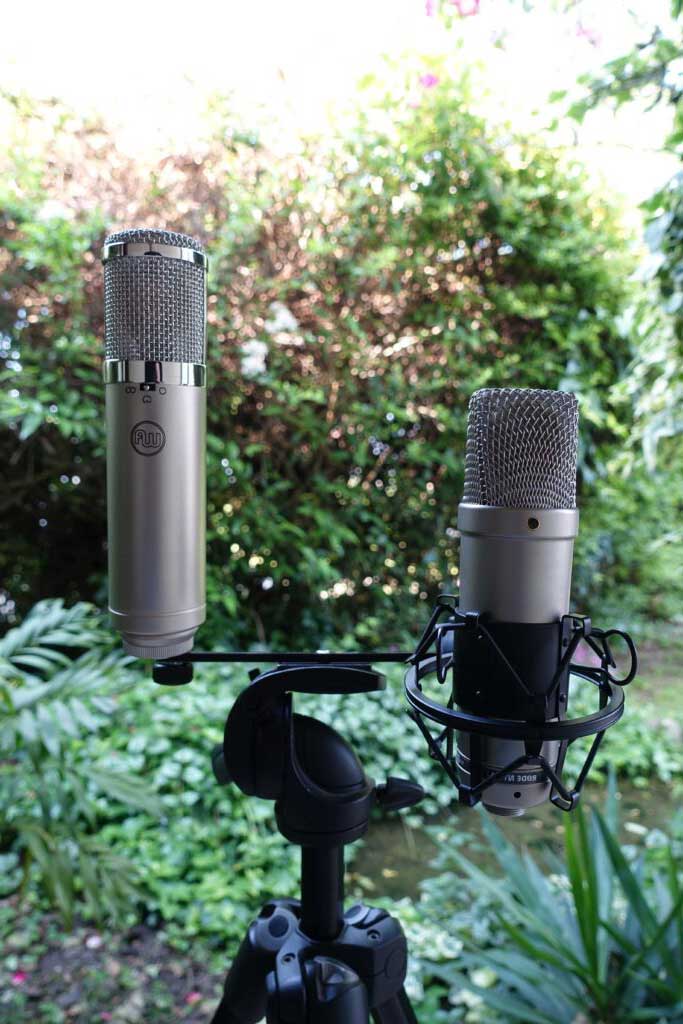
Please not: I reversed the image to avoid confusion in the listening sequence
ZOOM F3 VS. ZOOM H1e – ME66
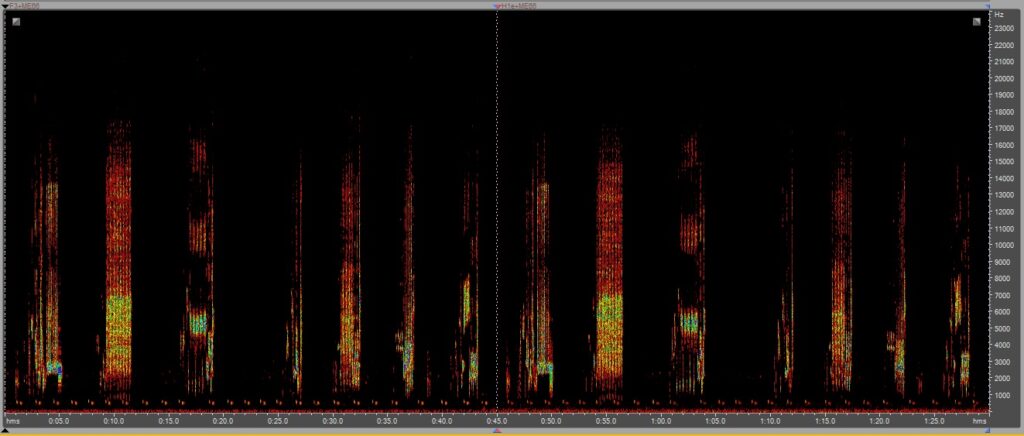
Stimulated by a fair comment received after a previous post on the “Field Recording” Facebook Group, I performed a test by recording simultaneously with the two ZOOM H1e and F3 recorders using a Sennheiser ME66 microphone on both. To power the ME66 on the H1e I used a 1.5 volt AA battery on the K6 power module while on the F3 I used the direct 48V power supply from the F3.
Entrambe le parti di file sono state normalizzate a -0.1dB.
First half starts with F3, second part with H1e.
For now, enjoy this simple test!
0:00-0:45 F3+ME66 – 0:46-1:30 H1e+ME66
====================================================================================
Here I selected a small part of the track where there is no nightingale song and raised it by +20dB to see the difference in noise between the two recorders with the incoming signal from the two ME66s powered in the manner described previously. The “noise” in H1e is thus well highlighted.
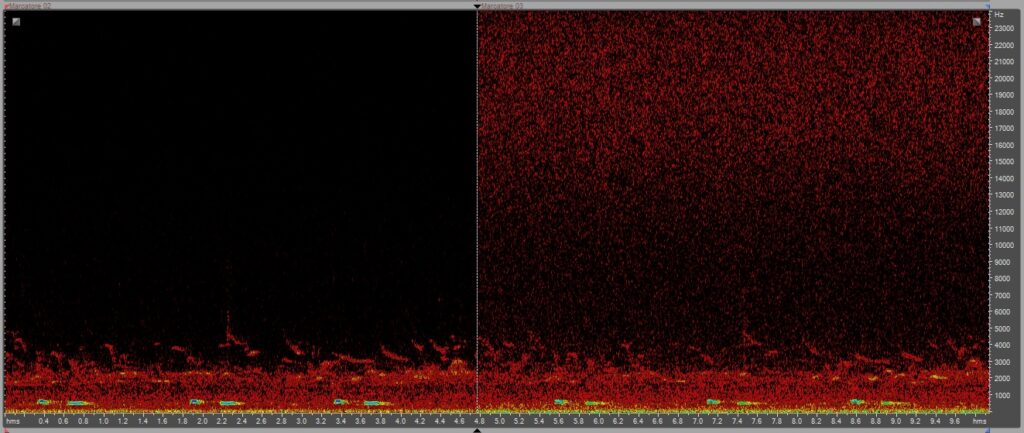
I believe the noise detected with the H1e is mostly due to the noise of the ME 66 microphone when powered with a 1.5 volt battery rather than Ph 48v Phantom power.
I then ran a simple noise-only test.
In the spectrogram below you can clearly see the difference in noise between the two types of power supply after I performed a noise-only test. The noise spectrum perfectly matches the one highlighted in the signal file above.
Unfortunately there is no other way to use this microphone on the H1e, other than using an external power supply such as the Art Phantom 2 Pro.
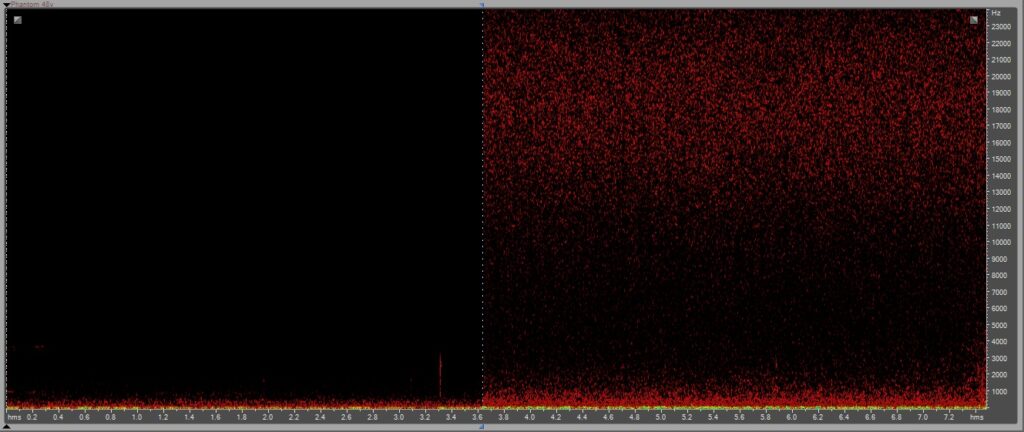
ZOOM H1e Vs. ZOOM F3
Today, 1 may 2024 at 4.45 local time, with a light breeze, I recorded the song of a nightingale from a distance of about three meters. I used both a ZOOM H1e Essential and a ZOOM F3, both equipped with 32-bit float technology.
With H1e I used the internal microphones, while with F3 I used a pair of Sennheiser ME66.
Low cut 80 Hz, 48 Khz sample rate for either.
I then normalized both files to -3 dB. Clearly, using two completely different systems, the results obtained are incomparable, and I certainly didn’t expect something very different, however it is always useful to have a comparison, just to understand how far you can go with one or the other equipment.
PS. on the left channel with F3 and ME66 there is some slight disturbance due to the radio frequencies of the smartphone which I had inadvertently left on.
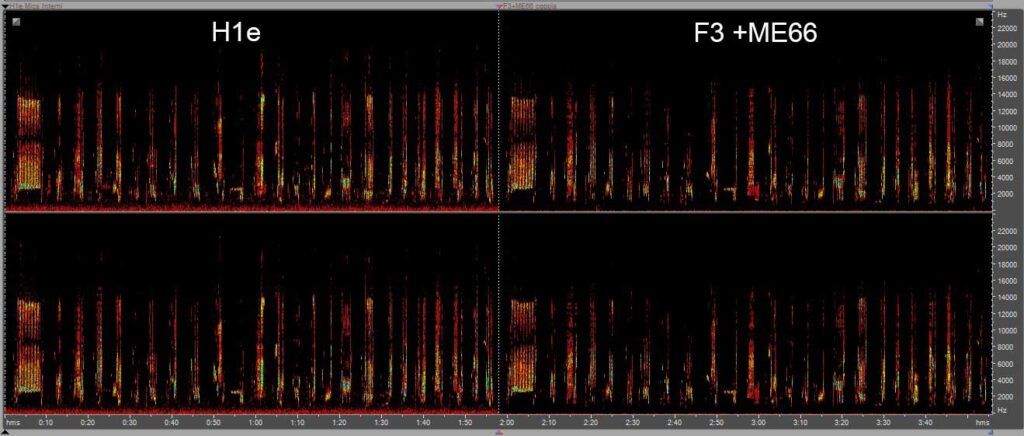
32-bit Float – Helicopter recording
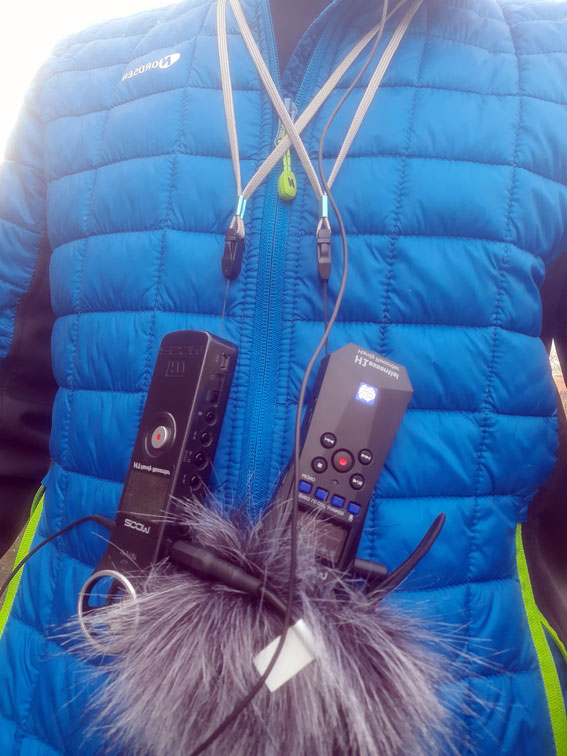
This evening I was trying to record with a setup that I experiment with from time to time in parabola: a mixed stereo + mono baffle (see here for the original setup), using two cheap Zoom recorders: the old H1 first version for the STEREO part and the latest version H1e Essential for the MONO part, recording the signal with both recorders simultaneously.
Coincidentally (and fortunately!), a Firefighters helicopter passed exactly over my head, at an estimated height of about 3-400 meters.
I thus had the opportunity to further experiment with the ability of the 32-bit float system to compensate for an excessively high incoming signal, allowing me to restore the signal in the correct way and no longer distorted by audio clipping.
Nothing to do for the file recorded with the old H1, distorted originally and consequently even after an attempt at normalization (obviously failed).
The choice to record in stereo mode with H1 and in MONO with H1e was completely random, perhaps also due to the fact that H1e allows you to choose between stereo and mono modes.
Below are the Waveforms and the relative audio files.
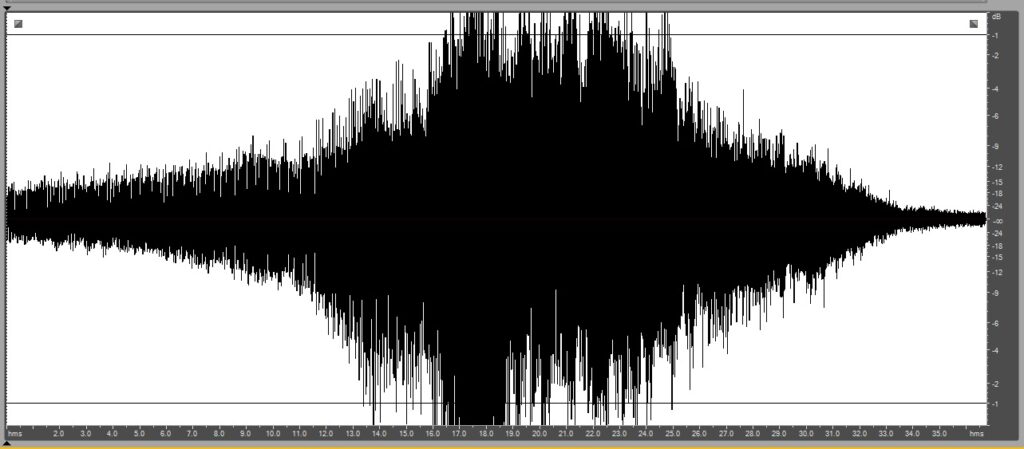
H1e Essential – original recording
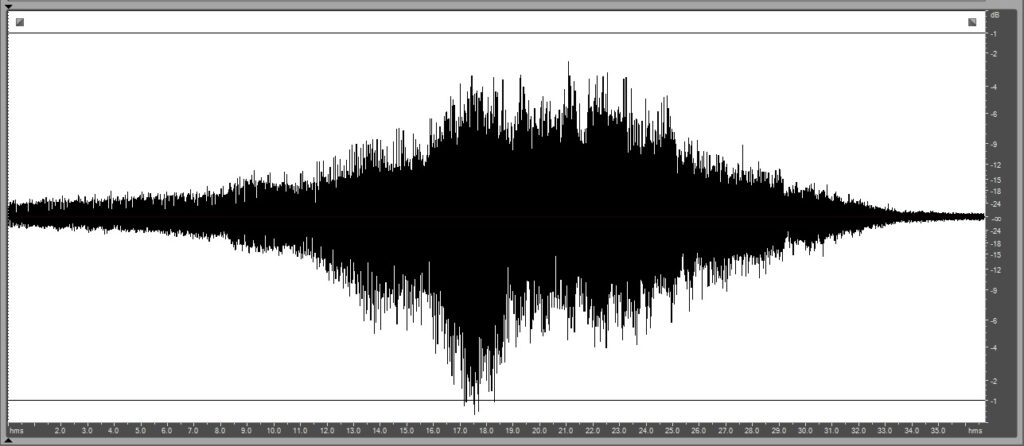
H1e Essential – Normalized recording
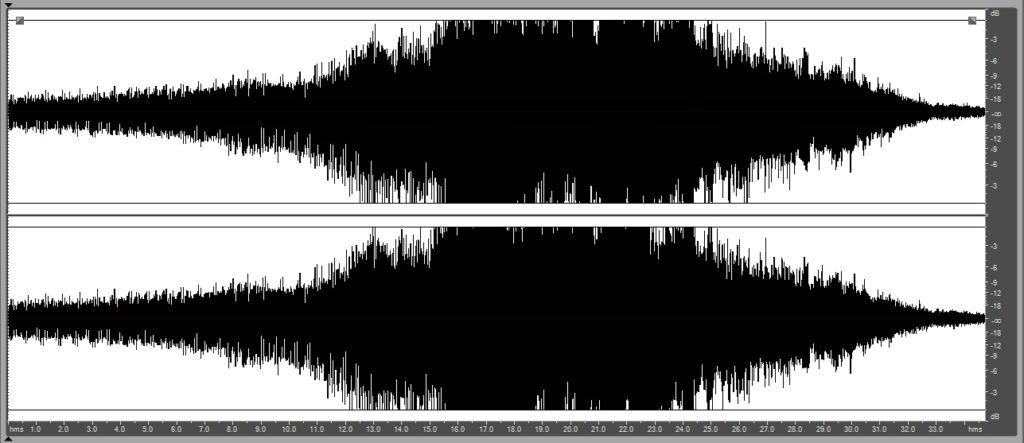
H1 – original recording
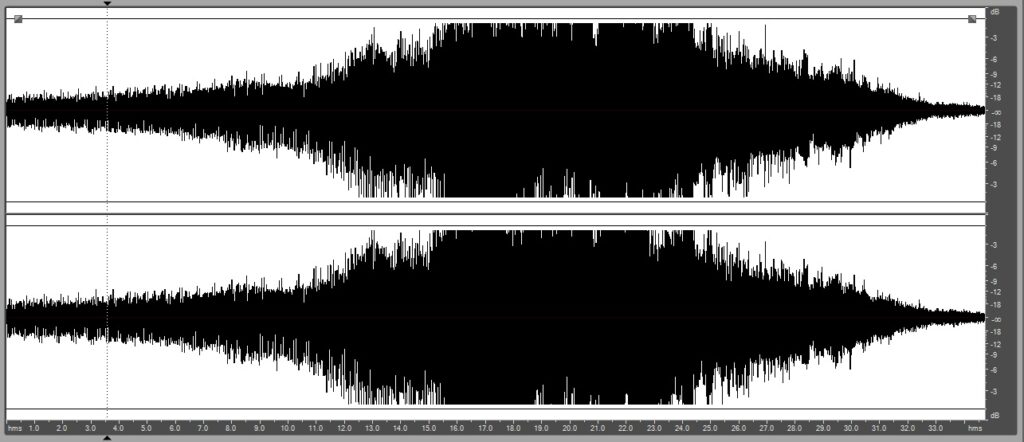
H1 – Normalized recording
_________________________________________________________________________________________________________
To simplify the visualization unrecoverable H1 trace, I insert the below image with normalization at -6dB, where the destroyed peaks are perfectly visible.
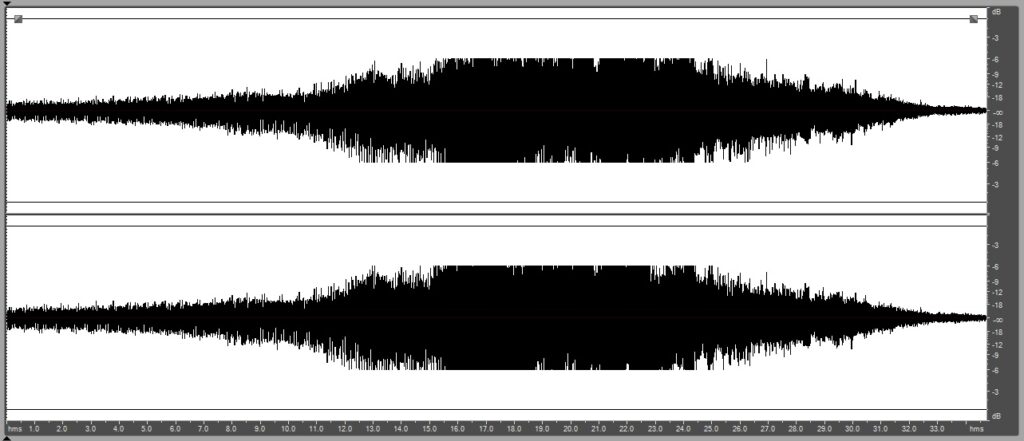
32-bit float and nature recordings
It may happen, particularly when recording in parabola, that a part of the file is recorded clipped due to the impulsive signal being too high.
Here are two calls I recorded with the Zoom H1e Essential and a DIY stereo parabola with 1+1 AOM 5024 capsules.
The first is the call of a European Blackbird emitted in flight from left to right; the second is the call of a Great Spotted Woodpecker recorded while it is entering the hole of the nest. In both there is the originally recorded signal with a clipped part, immediately followed by the normalized part recovered in post production via DAW.
As you can see and hear, with 32-bit float there is the possibility of recovering the signal simply by normalizing it.

Jose Arcas – Spagna
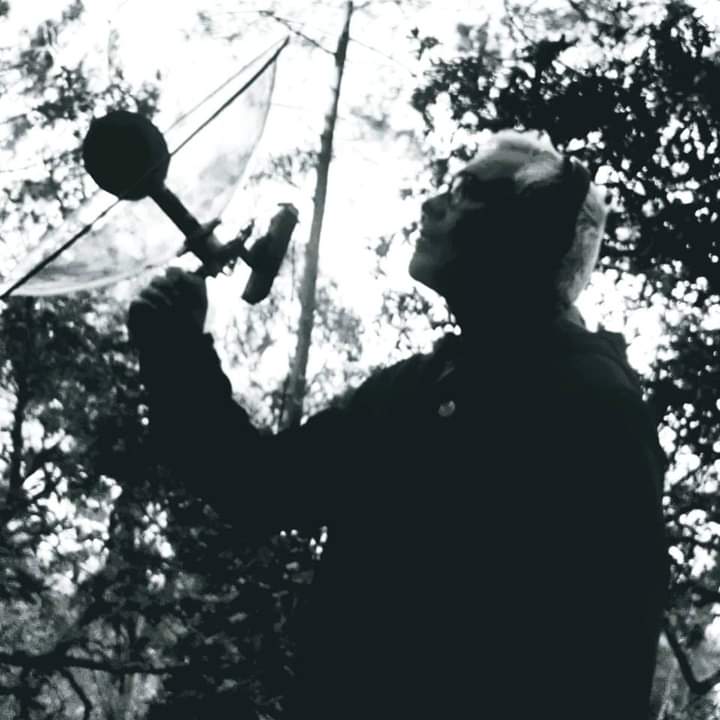
Jose Arcas nature-artist here with a “naturesound.it Plug In Power parabolic microphone” and Tascam DR05x.
Parabolic Stereo Microphone NATURESOUND.IT – in action
Here on Youtube, Marc Namblard using a naturesound parabolic stereo microphone (see for it on Ebay.it).
Here on Facebook
GRèGORY CHAMMING’S IN THE STORM
I received this astonishing recording from my friend Grègory Chamming’s.
Thanks Grègory!
You have the word…
Hi Marco. I tell myself that we are fragile on this Earth… Yesterday, for the third time in my life, I had a “stormy” experience… I love thunderstorms, they fascinate me, and as soon as one breaks out, I feel “electric”, and that attracts me, and I’m going to see… So yesterday, I was sitting in a meadow, waiting for the storm to come… It’s coming from the north-east. Strong, more and more powerful. After a few minutes, before I could anticipate it, a bolt of lightning struck, and a few milliseconds later there was a great “Tsaaac!” in the air, barely a hundred metres from me… I found myself propelled by the phenomenal power of the lightning, to the ground, backwards, on my back. I could feel my heart racing and starting to beat very hard, just after it seemed to stop… I threw everything on the floor, and with a lot of pain, ran to take refuge in my van, parked 50m away. I think I was lucky again…
recorded in Cubières, my village, LOZERE – 28 05 2023 at about 2pm – Zoom F3 + TETA microphone
Many thanks to Marc Namblard for 32-bit floating-point processing.


Commenti recenti